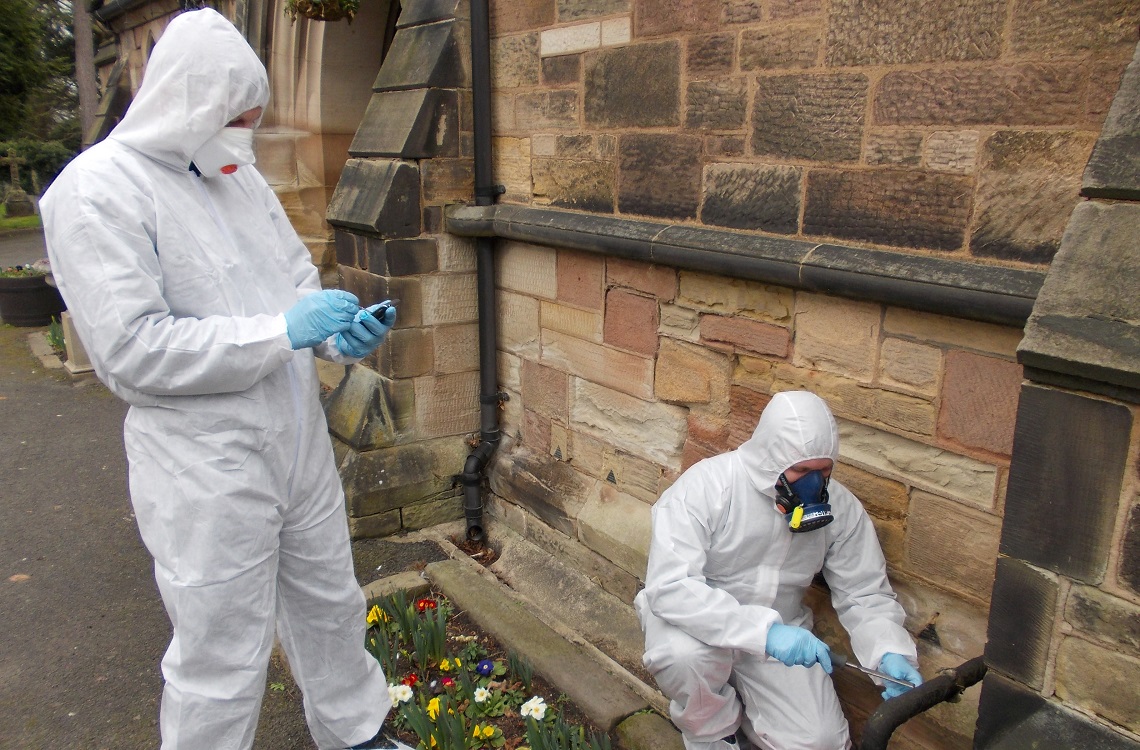
Older buildings carry a unique architectural charm and historical value, but they also come with significant safety concerns that modern construction standards aim to avoid. One of the most serious hazards found in such properties is asbestos—a material once celebrated for its heat resistance and strength. While asbestos was banned in many countries decades ago, countless structures built before the 2000s still contain it in walls, ceilings, insulation, and floor materials. Conducting asbestos surveys is crucial not only for public health but also for fire safety. These surveys identify and assess the presence of asbestos, ensuring that building owners can manage or remove it safely before renovation, demolition, or unexpected emergencies occur.
Understanding the Connection Between Asbestos and Fire Safety
Asbestos was widely used because of its excellent fire-resistant properties. Ironically, the same material once meant to improve fire safety can now endanger it. When exposed to intense heat or fire, asbestos materials deteriorate, releasing microscopic fibers into the air. These fibers, when inhaled, can cause severe respiratory illnesses, including asbestosis and mesothelioma. Moreover, damaged asbestos-containing materials during a fire can contaminate the environment, making cleanup efforts more hazardous and expensive. Older insulation boards, ceiling tiles, and fireproofing coatings can emit harmful dust that lingers long after a fire is extinguished. This makes early identification through asbestos surveys vital for reducing exposure risks during and after emergencies. Understanding where asbestos is located allows emergency response teams to handle fire incidents safely and minimizes contamination during recovery efforts.
How Asbestos Surveys Prevent Fire-Related Hazards
An asbestos survey serves as a detailed map of where asbestos-containing materials are present within a building. This knowledge helps property owners, contractors, and maintenance teams handle the materials responsibly, particularly during fire safety upgrades or restoration projects. Without accurate information, routine maintenance or electrical repairs could disturb asbestos and release toxic particles. For instance, removing old pipe insulation or rewiring systems hidden behind asbestos boards without proper precautions can increase fire risks and health dangers. Companies such as Supernova Asbestos Surveys provide comprehensive assessments that identify these high-risk materials, enabling safe management strategies. By understanding the condition and location of asbestos, building owners can plan safe renovations and reduce ignition hazards. Properly managed asbestos not only protects health but also supports the structural integrity of fire prevention systems within the property.
The Importance of Surveys During Renovations and Fire Safety Upgrades
When older buildings undergo renovation or are adapted to meet new fire safety regulations, asbestos surveys become even more critical. Many fireproofing materials installed before asbestos bans still exist behind walls, in ceiling voids, or near heating ducts. Disturbing them during upgrades—such as installing alarms, sprinklers, or new insulation—can unintentionally release dangerous fibers. Conducting a survey before any modification ensures that all work is carried out safely and in compliance with environmental laws. This proactive step helps builders avoid contamination, costly delays, and potential health liabilities. It also guarantees that fire safety enhancements do not inadvertently increase exposure risks. Building owners who invest in asbestos surveys safeguard not only their property but also the well-being of workers, tenants, and visitors who rely on those structures daily.
Legal Responsibility and Risk Management
Government regulations require asbestos surveys for most pre-2000 buildings, emphasizing the legal duty to protect occupants and workers. Property owners who fail to conduct these assessments face penalties, lawsuits, and reputational harm. Beyond compliance, however, these surveys represent responsible risk management. By identifying asbestos early, owners can develop a clear management plan that aligns with both health and fire safety standards. This plan includes labeling asbestos materials, restricting access to contaminated areas, and implementing safe removal procedures when necessary. Regular monitoring of asbestos conditions ensures that deterioration does not go unnoticed, reducing the chance of fire spreading through damaged or unstable materials. Ultimately, understanding and managing asbestos helps maintain safer environments for everyone involved.
Protecting Occupants and Emergency Responders
Another key reason asbestos surveys are essential for fire safety lies in protecting the people most affected during emergencies. Firefighters and emergency responders face heightened risks when entering older structures that contain asbestos. As fire weakens these materials, airborne fibers can contaminate protective gear and spread through ventilation systems. Identifying asbestos in advance enables emergency services to plan safer response strategies, using protective equipment and containment methods that limit exposure. Likewise, occupants benefit from reduced long-term health risks when asbestos-containing materials are properly managed or removed. The survey’s findings help create safer evacuation routes and ensure that buildings meet modern fire safety standards without hidden dangers.
Long-Term Benefits for Building Integrity and Sustainability
Beyond immediate safety, asbestos surveys contribute to the long-term sustainability and resilience of older buildings. Knowing where asbestos exists helps building owners plan renovations with minimal disruption and waste. Safe management ensures that structures can be preserved rather than demolished, maintaining their heritage while meeting modern safety codes. Moreover, asbestos surveys play a vital role in supporting green redevelopment projects by ensuring that harmful substances are contained before new materials are introduced. This approach aligns with environmental goals, promoting cleaner, healthier urban spaces while preserving architectural history. Responsible asbestos management therefore benefits not just current occupants but future generations who inhabit and maintain these restored buildings.
Asbestos surveys are indispensable for maintaining fire safety and public health in older buildings. They uncover hidden risks, prevent contamination, and ensure that renovation or emergency efforts do not endanger lives. By combining detailed assessment with safe management practices, these surveys form the foundation of responsible building care. They protect occupants, firefighters, and maintenance teams while ensuring compliance with health and safety regulations. More importantly, asbestos surveys allow historic buildings to remain safe, functional, and sustainable. For any property owner seeking to safeguard both people and property, investing in thorough asbestos assessments is not just a precaution—it is a vital step toward creating a safer future for everyone.